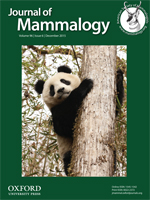Mouse lemurs (Microcebus) are solitary, experience heavy predation, and use torpor to conserve energy, so an individual's choice of daytime sleeping site can have a major impact on its fitness. Sharing a sleeping site may strengthen social bonds or insulate against fluctuating ambient temperatures. Changing sites often may prevent tracking by predators. Choosing a site in a hole in an old, thick tree may allow for longer and deeper torpor. The aim of this paper is to provide a preliminary characterization of sleeping site selection and use in Microcebus rufus, the brown mouse lemur. We trapped mouse lemurs in disturbed forests in the peripheral zone of Ranomafana National Park, Madagascar, and tracked 7 individuals using temperature-sensitive radiocollars. Radiotracked individuals shared sleeping sites concurrently and serially and slept in same-sex and mixed-sex groups. They slept in tree holes as well as in piles of leaves on branches. Radiotracked individuals tended to use higher-diameter at breast height trees, and in one site, tall trees were also used more often. Preference for and reuse of well-insulated sleeping sites suggests that thermoregulation is a primary concern for winter sleeping site selection in M. rufus. If such sites are of limited availability in disturbed sites, the ability for M. rufus to maintain torpor during the winter may also be limited. Conservation efforts must include preservation of older trees in order to maintain thermoregulatory refuges in disturbed habitats that support lasting mouse lemur populations.
How to translate text using browser tools
1 December 2015
A Preliminary Investigation of Sleeping Site Selection and Sharing by the Brown Mouse Lemur Microcebus rufus During the Dry Season
Caitlin J. Karanewsky,
Patricia C. Wright
ACCESS THE FULL ARTICLE

Journal of Mammalogy
Vol. 96 • No. 6
December 2015
Vol. 96 • No. 6
December 2015
habitat disturbance
mouse lemur
Ranomafana National Park
thermoregulation
torpor




